D2.mdx Physiological Data
D2.B10-Dmdmdx/J (013141) is a newer JAX strain created by backcrossing 001801 mice onto the DBA/2J background. This new strain better recapitulates several of the human characteristics of DMD myopathy (reduced lower hind limb muscle weight, atrophied myofibers, increased fibrosis and inflammation, and muscle weakness) when compared to B10.mdx mice.
Return to Muscular Dystrophy Efficacy Studies
Ambulation & Strength
Open Field Test
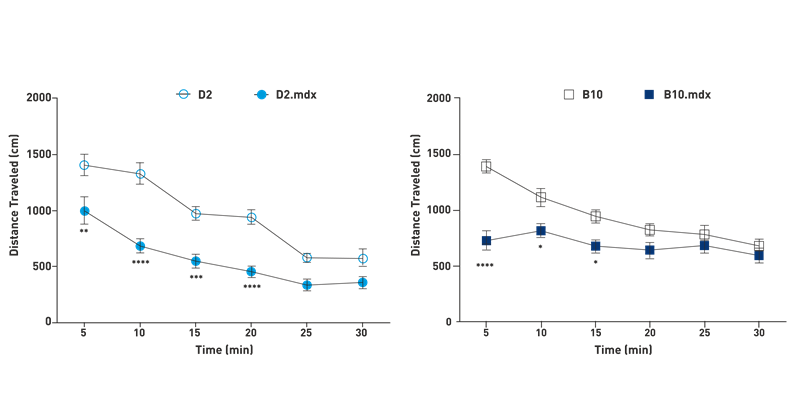
B10.mdx, D2.mdx, and their wild type controls were tested in open field for 30 min. Wildtype mice initially explore their new environment, resulting in high distanced traveled. Over time they move around less. Both B10.mdx and D2.mdx move less than their wild type controls in the open field test. The D2.mdx model has a more severe ambulation deficit.
Grip Strength
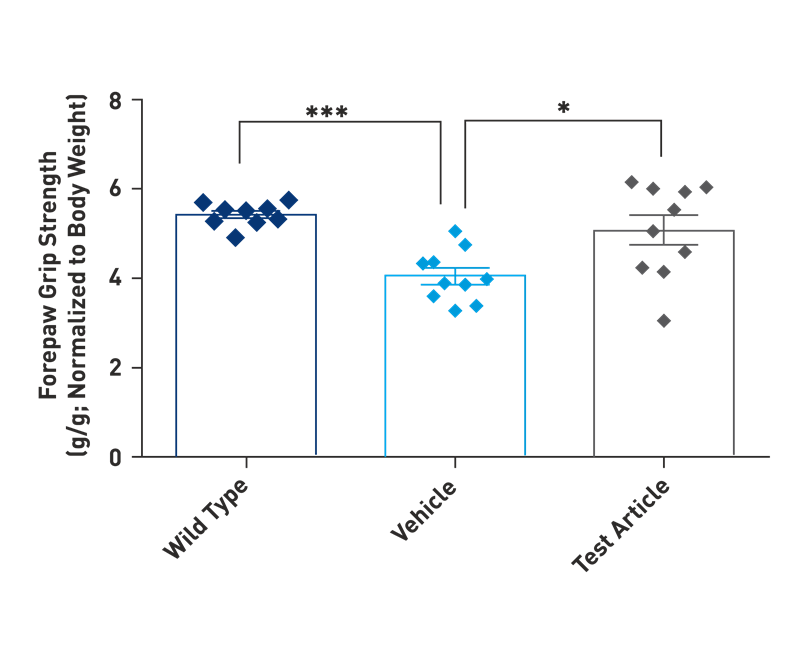
Grip strength is measured in grams by a grip-strength meter on live mice, and normalized to their body weight. D2.mdx mice (Vehicle) are weaker than the wild type controls. Grip strength is restored to close to wildtype levels by treating D2.mdx mice with a test article.
Force Measurement
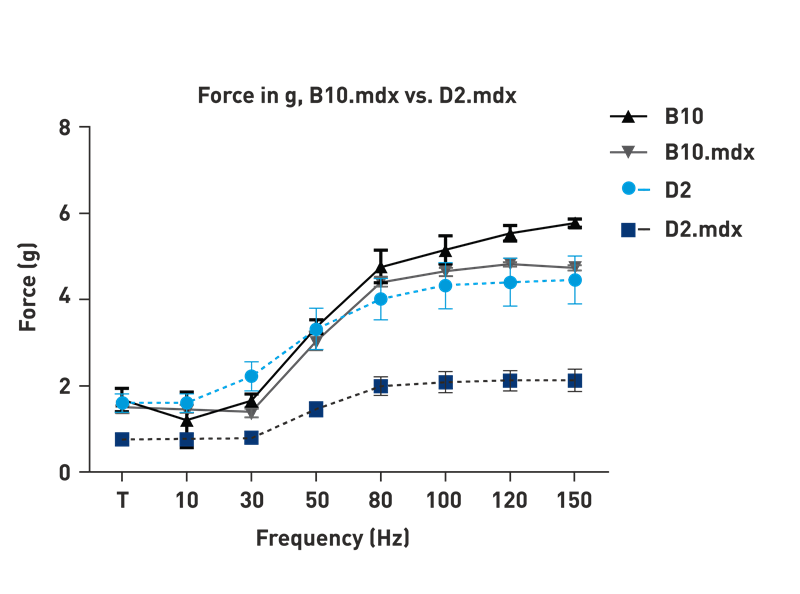
The torque of the dorsoflexion of the foot was measured in 8 week old anesthetized mice upon stimulation of the peroneal nerve. Force increases with the frequency of the stimulus. Maximum force is reached at 100-150 Hz. B10.mdx mutants have a slight decrease in force compared to wild type controls. In comparison, D2.mdx have a much greater decrease in force compared to wild type controls.
Muscle Damage
D2 vs B10.mdx Serum CK
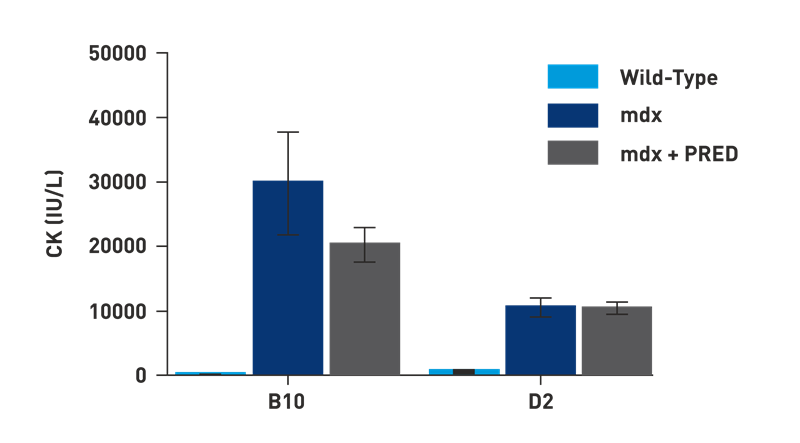
Serum creatine kinase (CK) is an indicator of muscle injury. The break down of hypertrophic, large muscle fibers in B10.mdx is associated with higher serum CK levels than in D2.mdx, characterized by atrophied muscles. Treatment of B10.mdx mice with Prednisolone (PRED) decreases the serum CK levels in B10.mdx.
Fibrosis
Sirius Red Staining, TA Bone D2 vs B10
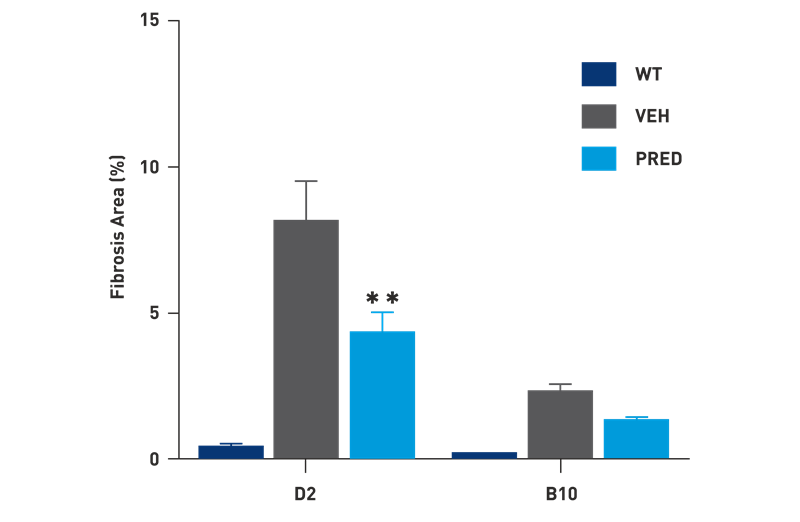
Sirius Red staining on muscle sections measures the amount of fibrosis in the skeletal muscle. D2.mdx and B10.mdx both show an increase in fibrosis over the wild type (WT) controls, but fibrosis is greater in the D2.mdx mice. Prednisolone (PRED) treated mice have a decrease in fibrosis compared to vehicle (VEH) treated mice.
Sirius Red Staining
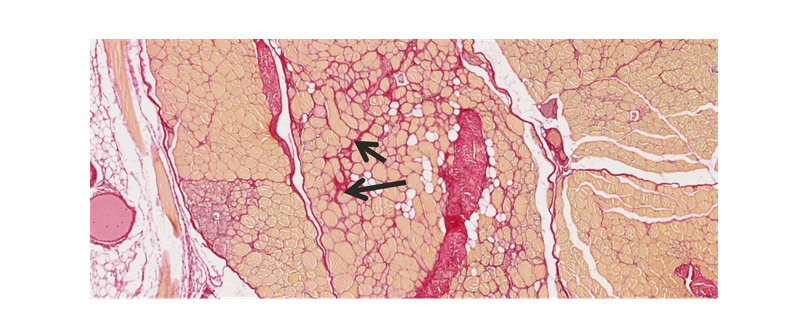
The Sirius Red staining measures the fibrosis in the skeletal muscle of D2.mdx at 8 weeks of age. Fibrosis is indicated by the thick red staining between the cells (see arrows).
Hydroxyproline
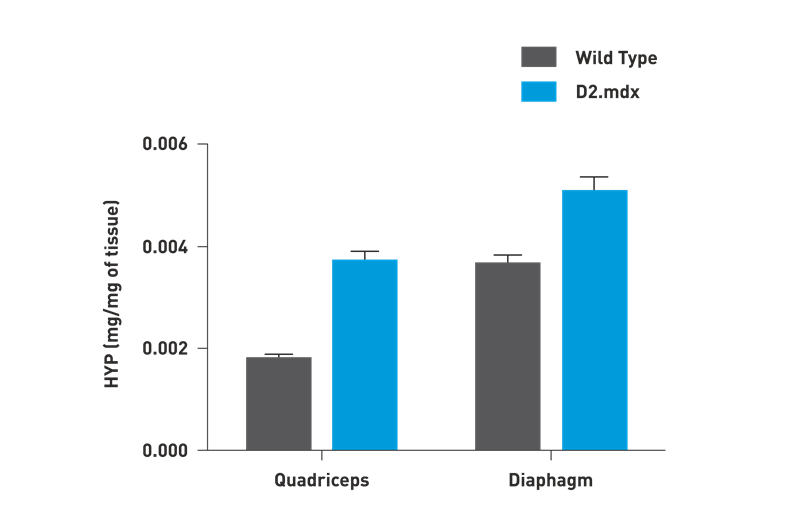
Hydroxyproline levels are a measurement of fibrosis in the skeletal muscle. D2.mdx mice have more fibrosis than the wild type controls, thus more hydroxyproline in both the quadriceps and diaphragms of D2.mdx mice.
Inflammation
Cell Sorting
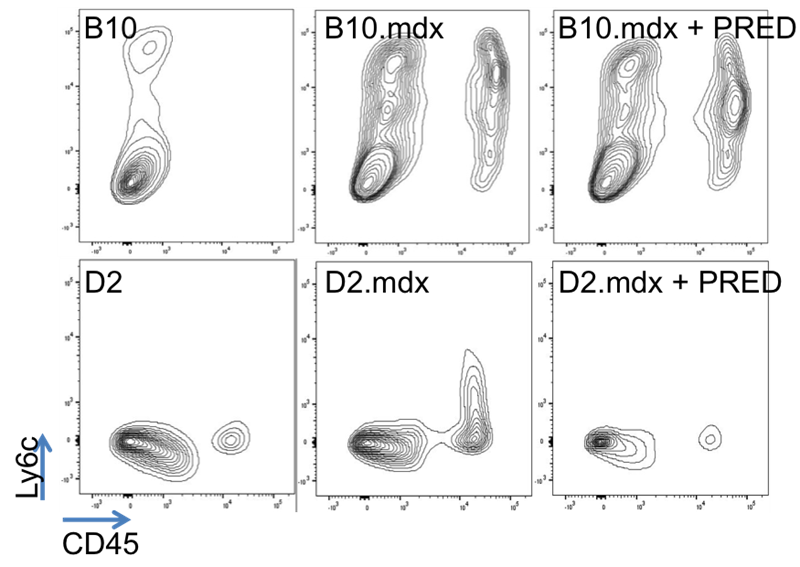
Flow cytometry allows the enumeration of cell populations contributing to muscle inflammation and their response to anti-inflammatory test articles. Single cells isolated from the skeletal muscle are in majority CD45- in wild type mice (left); in mdx, the abundance of CD45+ (immune) cells increases. Many express Ly6c, a marker of inflammatory monocytes. The treatment of mdx with prednisone decreases the abundance of CD45+ immune cells and prevents the apparition of Ly6C+ inflammatory cells. B10.mdx muscles contain more inflammatory immune cells than D2.mdx muscles.
CD11c+, MHCII+ (cDC)
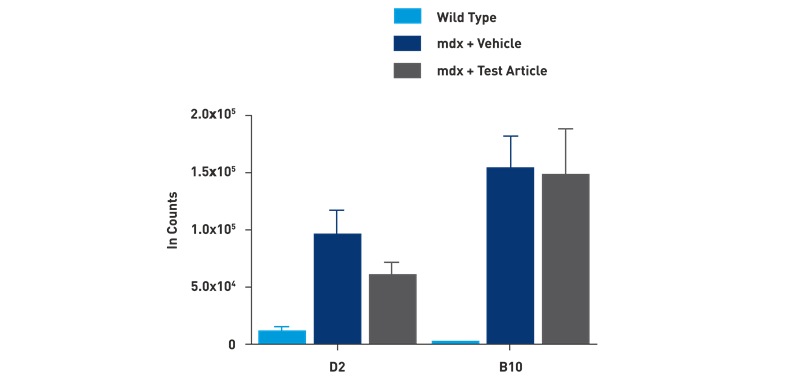
Dendritic (CD11c+, MHCII+) cells increase during muscle inflammation. B10.mdx mice have greater inflammation than D2.mdx mice by this measurement (compare mdx + Vehicle). An anti-inflammatory test article only decreased inflammation in the D2.mdx mice.
Morphometry
Histology Slides
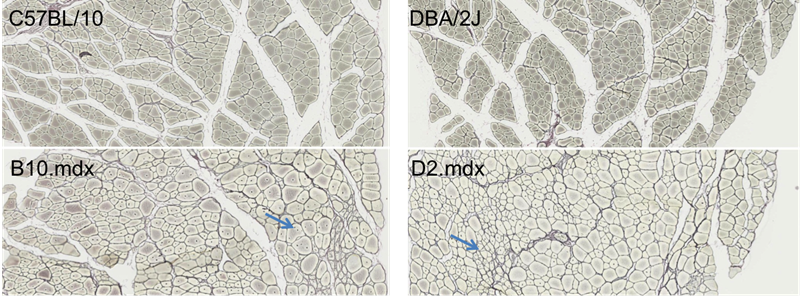
Note the abundance of large, hypertrophic fibers with central nuclei in B10.mdx compared to B10 control (left, arrow) ; D2.mdx, in contrast, presents atrophic fibers without central nuclei, indicative that a lower regenerative capacity leads to a more severe muscle wasting (right, arrow).
Automated Morphometry Measurements

Automated morphometry measurements plot the frequency distribution of muscle fibers based on their diameter and detects hypertrophy (increase in large fibers) or small, abnormal fibers. Both B10.mdx (left) and D2.mdx (right) mice have an increase in hypertrophy compared to wildtype (compare Vehicle to WT), but B10.mdx mice have greater hypertrophy than D2.mdx. In D2.mdx mice, Prednisolone (PRED) further increased the percentage of small, fibers – a side effect of long term exposure to corticoids.
Tibialis Anterior
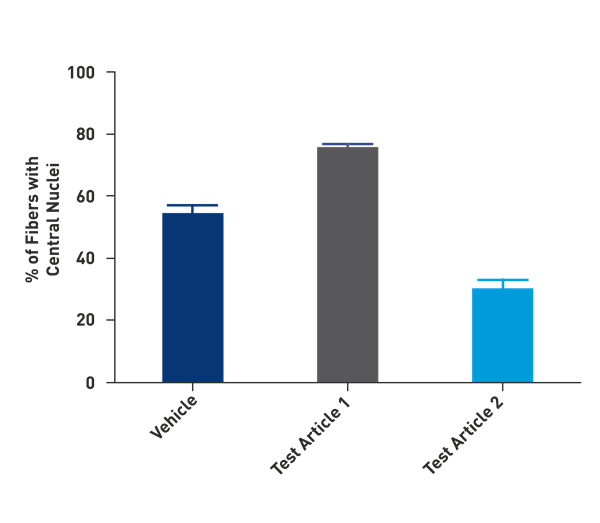
Automated morphometry measurements on muscle sections (here at 8 weeks of age) can detect changes in regeneration (% of central nuclei) in the muscle. Treatment of D2.mdx mice with some test articles can increase or decrease regeneration in the muscle (Article 1 or 2).